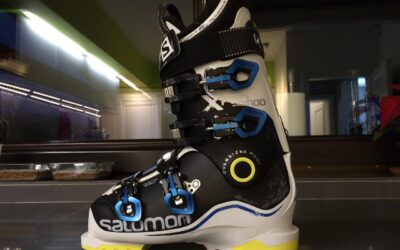It wasn’t long ago when all bike tires looked the same. Rewind merely a couple decades and most bike tires were either regular or thin.
Bicycle tire technology has advanced, leading to innovation including the creation of fat tires. Thick tires look cool, help with balance and have superior traction.
Should you add fat tires to your bike? Let’s find out.
Oversized Tires: Yay or Nay?
Fat tires are sturdy, meaning they make it easy to balance and traverse harsh terrain. Whether you are riding off the beaten path on the trails, venturing through muddy terrain or exploring parts unknown, functionality is of the utmost importance.
Oversized tires provide both function and form. You’ll look cool riding around with fat tires yet you’ll also receive the added benefit of on-bike security.
Here’s what matters most: you are less likely to fall when riding on fat tires.
Oversized tires are typically 3.8 inches or even larger with 2.6-inch-wide rims. The extra size makes it easier to ride with air that is low pressure, ultimately providing enhanced stability and traction.
Consider Your Approach to Riding
Do you ride around the block? Or are you partial to challenging terrain such as mountains, muddy trails or even snow?
If you venture off the beaten path to uneven surfaces, you owe it to yourself to give fat tires a try. Fat tires make it easier to traverse uneven terrain that would otherwise be difficult for tires of regular size.
Fat tires are also advantageous in that they grip the ground better when there is inclement weather. The oversized tires’ added surface area combined with lower pressure makes it easier to retain a grip on slippery terrain.
Are There any Downsides to Fat Tires?
Fat tires aren’t for every biker. If you are pinching pennies, be aware that fat tires tend to cost more than regular tires. Oversized tires also slow riding speed as there is more rolling resistance.
Oversized tires also weigh more than regular tires as they have additional rubber and rim material. The additional weight makes pedaling a bit more challenging. As a result, you’ll find accelerating requires more effort.
Fat tires are also less agile and responsive than traditional tires as their air pressure is less than that of conventional tires. Moreover, wide tires’ high volume also reduces agility and responsiveness.
The end result is a bike that cannot corner and turn as quick as possible with tires of regular size. Bikers who are partial to technical and tight riding trails should be aware of these drawbacks and plan accordingly.
To Ride Fat Tires or Not? That is the Question
Fat tires are worth the hype and then some. In the end, these tires have more positives than negatives.
Give the “fatties” a try on your bike and you’ll be more than pleased with the results.
Shop Lotz for Your Biking Needs
Whether you are a newbie cyclist or a veteran of the riding game, you deserve the best gear.
Check out our cycling inventory and you’ll find exactly what you need.
Here’s an added bonus: create a Lotz shop account and you’ll receive 5% off all purchases.
Click the blue refer button in the bottom right corner of your screen and start earning.




0 Comments